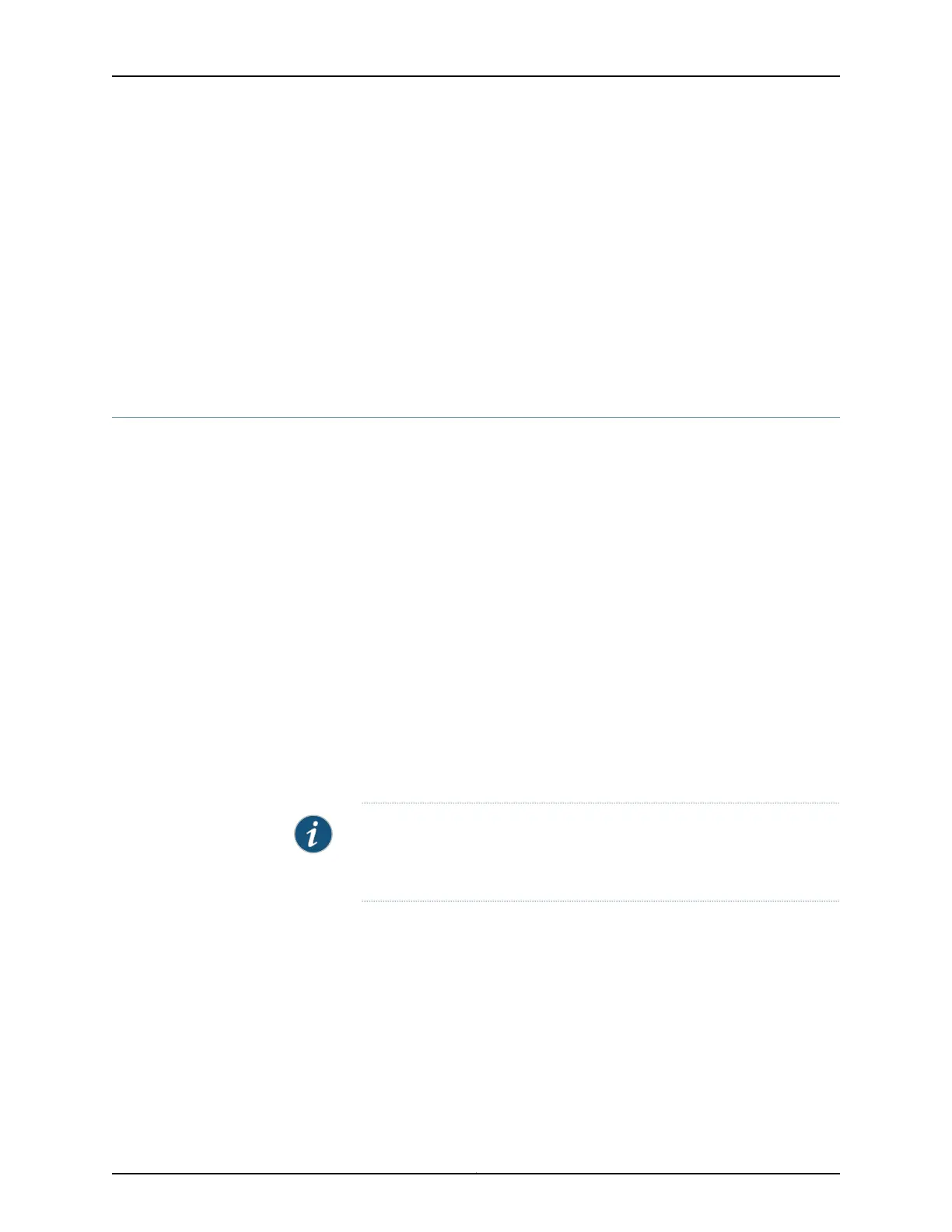•
Example: Configuring Policing on an ATM IMA Pseudowire on page 915
•
Hierarchical Policers on ACX Series Routers Overview on page 920
•
Guidelines for Configuring Hierarchical Policers on ACX Routers on page 921
•
Hierarchical Policer Modes on page 923
•
Processing of Hierarchical Policers on page 928
•
Actions Performed for Hierarchical Policers on page 929
•
Configuring Aggregate Parent and Child Policers on ACX Series Routers on page 931
•
Hierarchical Class of Service Overview on page 933
•
Hierarchical Class of Service in ACX5000 on page 936
CoS on ACX Series Universal Access Routers Features Overview
The following key CoS features are supported on ACX Series Universal Access Routers:
•
Physical interface-based classifiers at the [edit class-of-service interfaces
interfaces-name] hierarchy level
•
Fixed classification for all ingress packets traversing a logical interface to a single
forwarding class. Fixed classification is supported on all interface types.
•
EXP bits located in each MPLS label and used to encode the CoS value of a packet as
it traverses a label-switched path (LSP). To configure global EXP bits, include the exp
statement at the [edit class-of-service system-defaults classifiers] hierarchy level.
•
Rewrite rules at the physical and logical interface levels including the following: IP
type-of-service (ToS), DSCP, MPLS EXP bit value, and IEEE 802.1p bit value.
•
Attachment of the following rewrite rules to the physical interface at the [edit
class-of-service interfaces interface-name rewrite-rules] hierarchy level: IP ToS, DSCP,
and IEEE 802.1p bit value.
•
Rewrite rules for MPLS EXP bits on the logical interface at the [edit class-of-service
interfaces interface-name unit unit-number rewrite-rule] hierarchy level.
NOTE: Fine-grained rewrite is not possible, even when you use multifield
filters, because of the application-specific integrated circuit (ASIC)
limitation.
Queuing and scheduling features include:
•
Support for up to eight forwarding classes.
•
Support for up to eight egress queues per port.
•
Internal buffer of 2 MB with per-egress queue buffer management.
•
Three weighted random early detection (WRED) curves for TCP and one WRED curve
for non-TCP. There are two fill levels and two drop probabilities per WRED curve; the
drop probability corresponding to the first fill must be zero.
Copyright © 2017, Juniper Networks, Inc.864
ACX Series Universal Access Router Configuration Guide

